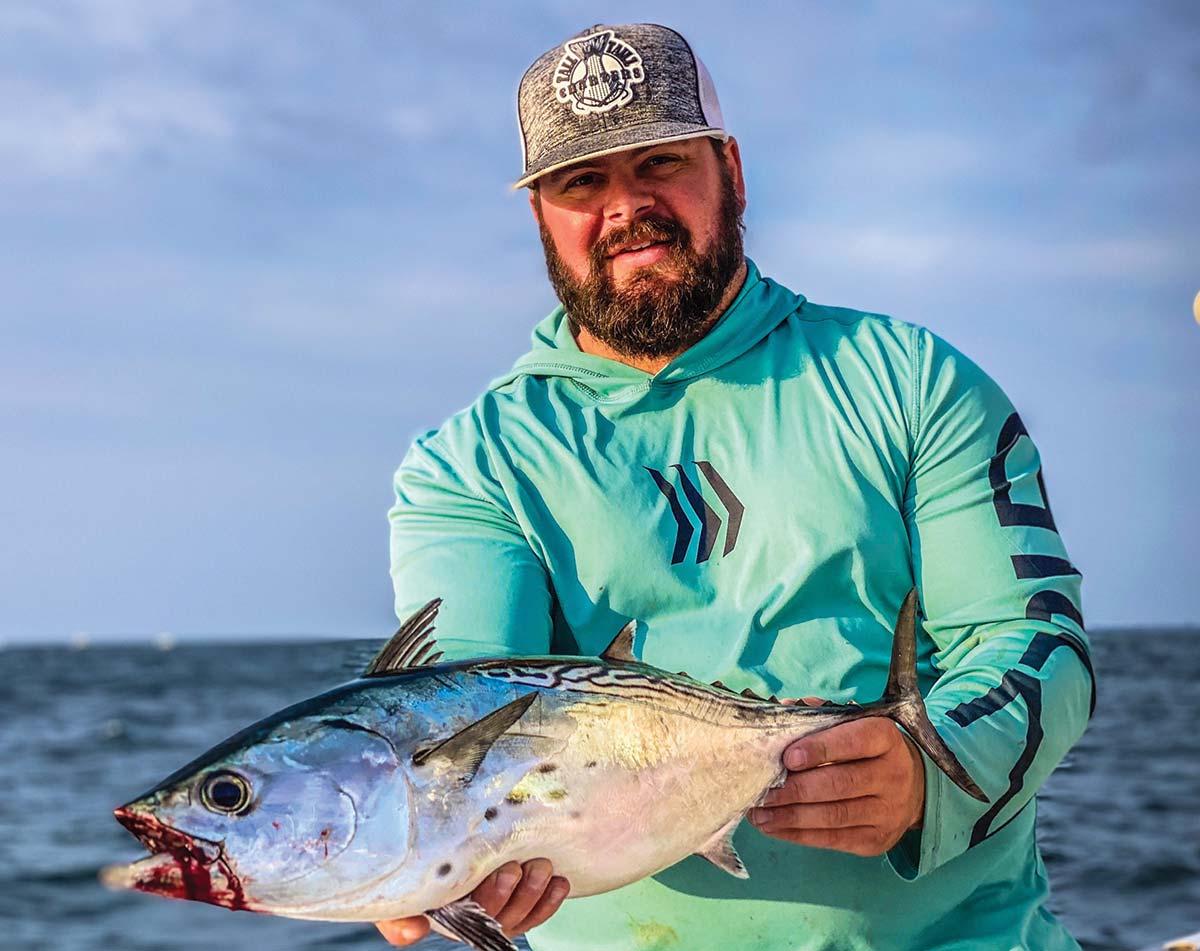
An overwhelming excitement abounds whenever false albacore and bonito are on the feed.
There is something undeniably special about early fall and late summer fishing in the Northeast. The temperature begins to drop to a comfortable mid-70 degrees while the humidity is all but gone. The water is the clearest it’s been all season. Loads of baitfish begin to flush out from the back bays and inland waters. You can take aim at a wide variety of species in a single day. Still, the most exciting days of the upcoming season are – hands down – the arrival of hardtails.
When false albacore and bonito take up residence in our inshore waters, I get overwhelmed with excitement. Hooking up to these drag-screaming speedsters is the apex of fall fishing. While some days are incredible, with explosive National-Geographic-like feeds for hours, other days can seem like a desolate ghost town. How can this be? Clearly the fish are still around.
So how can I find the fish when the action is so slow? The answer is simple—you just need to know what to look for in terms of the telltale signs to help locate the funny fish when they’re being particularly unfunny.
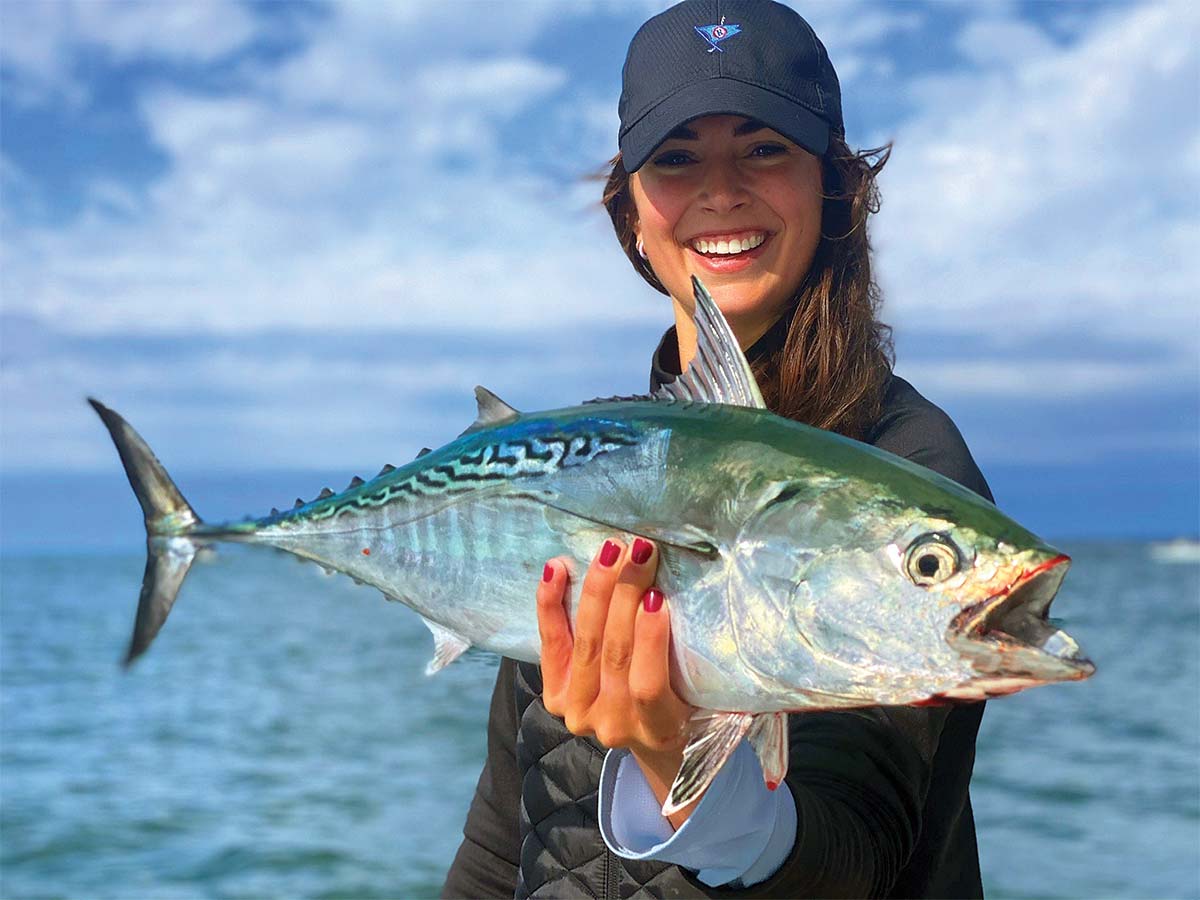
Start With The Basics
Apply some of the obvious signs and strategies many of us are already accustomed to. Always keep the three B’s in mind—birds, bait and busting fish. Scanning the water for diving birds, visible splashes and pockets of bait is albie fishing 101. Be aware of the behavior of the school also. Approach slowly and take your time. Note what direction they’re feeding, the size of bait they’re feeding on, time between surface feeds and the overall duration of activity. False albacore and bonito alike are very cyclical and will repeat patterns over and over if environmental factors don’t change much. Always keep a logbook for any fishing trip you go on, especially albie trips. Keep a close eye on your electronics for bait. You can see a vivid picture of what’s happening under the boat with a properly tuned sounder.
Pinpoint your casts so you’re ahead of the moving school. Ideally, I try to cast just off the edge of the bait ball, putting you lure in an ideal position for ambush. Mix up your retrieves: fast and aggressive is a good start, but sometimes they want it slow and lazy. Understanding the patterns in front of you and adjusting accordingly is the name of the game.
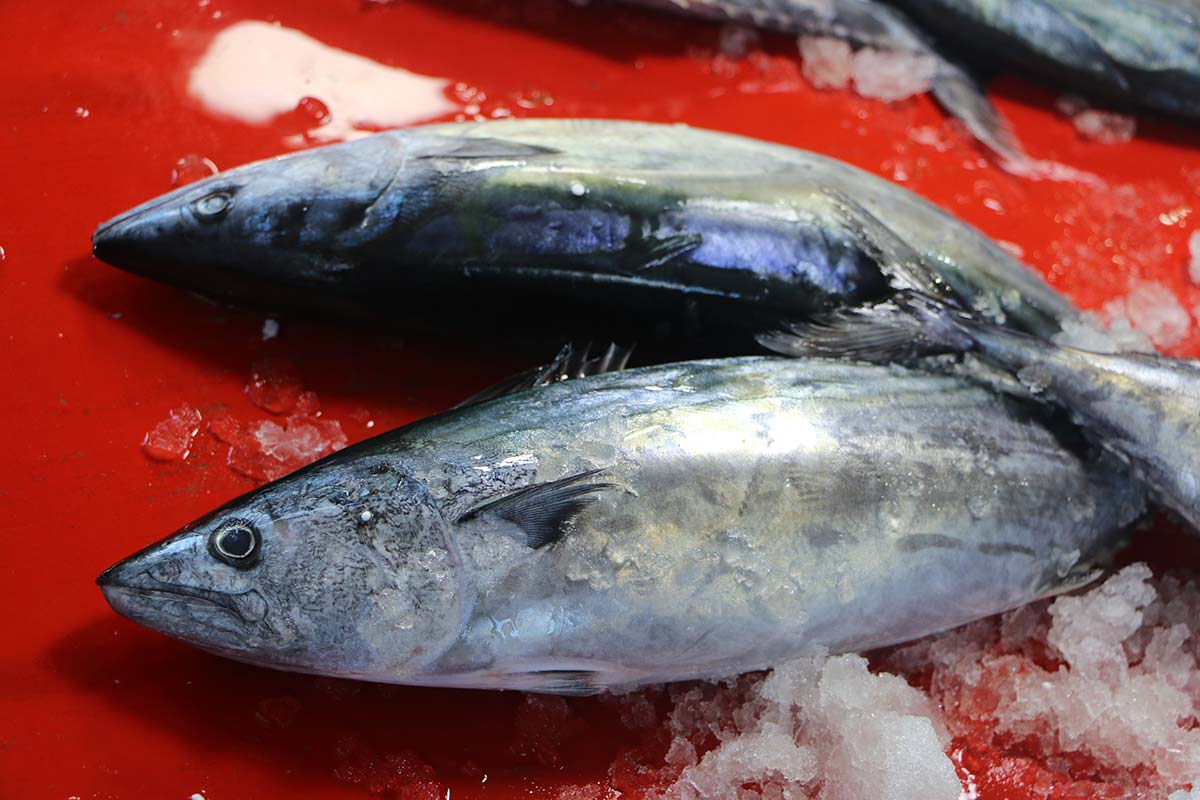
Seabirds have a much better idea of what’s going on under the water than we do. An inactive bird can still give us major clues that albies are nearby. Wild animals conserve their energy at all costs. This is especially true with seabirds. If you come across a group of birds congregated together, seemingly inactive, take a minute to observe. The birds aren’t there by coincidence. If I see a “line” or “row” of birds with big gaps between them, I know there is a good shot albies have been feeding recently. Birds will spread out to keep close surveillance on the action below them. When one group signals subsurface activity, the entire line of birds regroups and prepares for a surface feed.
Most people are too impatient to watch this process unfold. They don’t see any diving birds, so they motor right past. Pay very close attention to birds “looking down” beneath them. This is a major sign that a feed has just happened or is about to at any minute. Birds can sense the activity under them but if they’re physically looking down, get ready! This is a great opportunity to blind cast and experiment with different retrieves. I’ve had great success catching albies over the years while blind casting and bird watching.
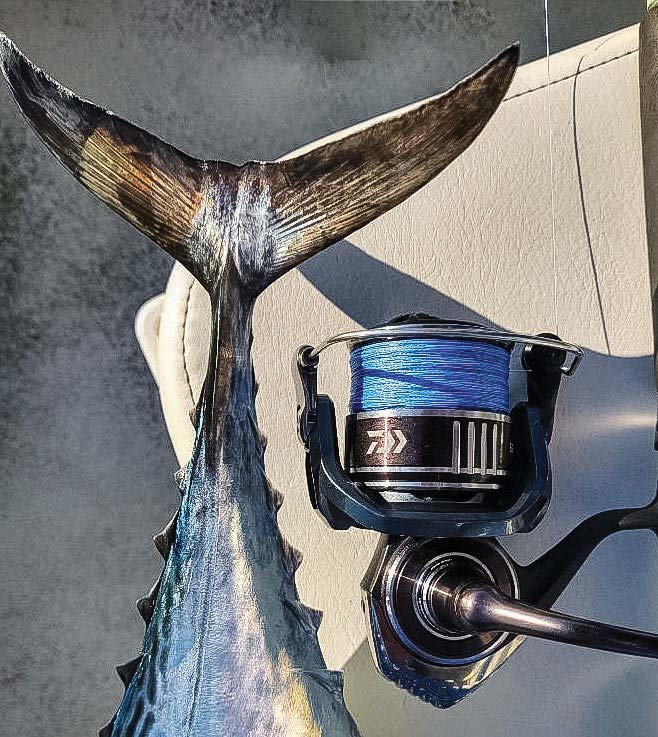
Observing Bait & Slicks
Baitfish can also tell you what’s happening in that area. Some days you need to work to find the bait pods, and other days they’re seemingly everywhere. When I’m cruising around looking for life, I always stop to assess the behavior of the baitfish. If the school is balled up very tightly and swimming erratically, odds are very high they are being worked, or have been. Often, albies won’t force the bait all the way to the surface. During these times you might see a lone handful of baitfish surface. This is a typical sign that the fish are lightly harassing the baitball from below. If I see this, I usually experiment with slower, deeper retrieves. I will also try some blind casts away from the baitfish, since I know the albies in that area aren’t in a forceful, surface-breaking feed at that time. The bait can also tell you when the albies are not around. This can be annoying, especially when there are loads and loads of bait. If you notice baitfish loosely formed, peacefully swimming in one direction or moving very slow, chances are they aren’t being bothered. If I see this, I move on to the next group of bait.
Sometimes birds and bait aren’t on the surface at all – but hope is not lost. The water can still give you powerful clues. I always pay close attention to visible slicks in the water. Slicks will usually appear in two different forms, oil slicks and current slicks. Current slicks don’t excite me nearly as much. They’re usually just streams of different paced tidal current sliding against slower or non-moving water. Sometimes this can be an avenue for bait to travel while conserving energy, but generally doesn’t show me very much.
Oil slicks are what I’m looking for. Telling them apart is relatively easy. Current slicks are more visible from a distance but are harder to identify when close. Oil slicks are visible from near and far and have a more pronounced glare. False albacore are incredibly oily fish, as are the bait fish they’re feeding on. When albies are moving fast and have been recently feeding, they can literally leave a slick of oil in their wake. The wider side of the slick would be further from the fish and the narrower, more visible side would be closer to the fish. An easy example of this is how a shark chum slick spreads from the boat while chumming. When you have limited signs to guide you, follow that slick and you’ll, hopefully, find the fish!
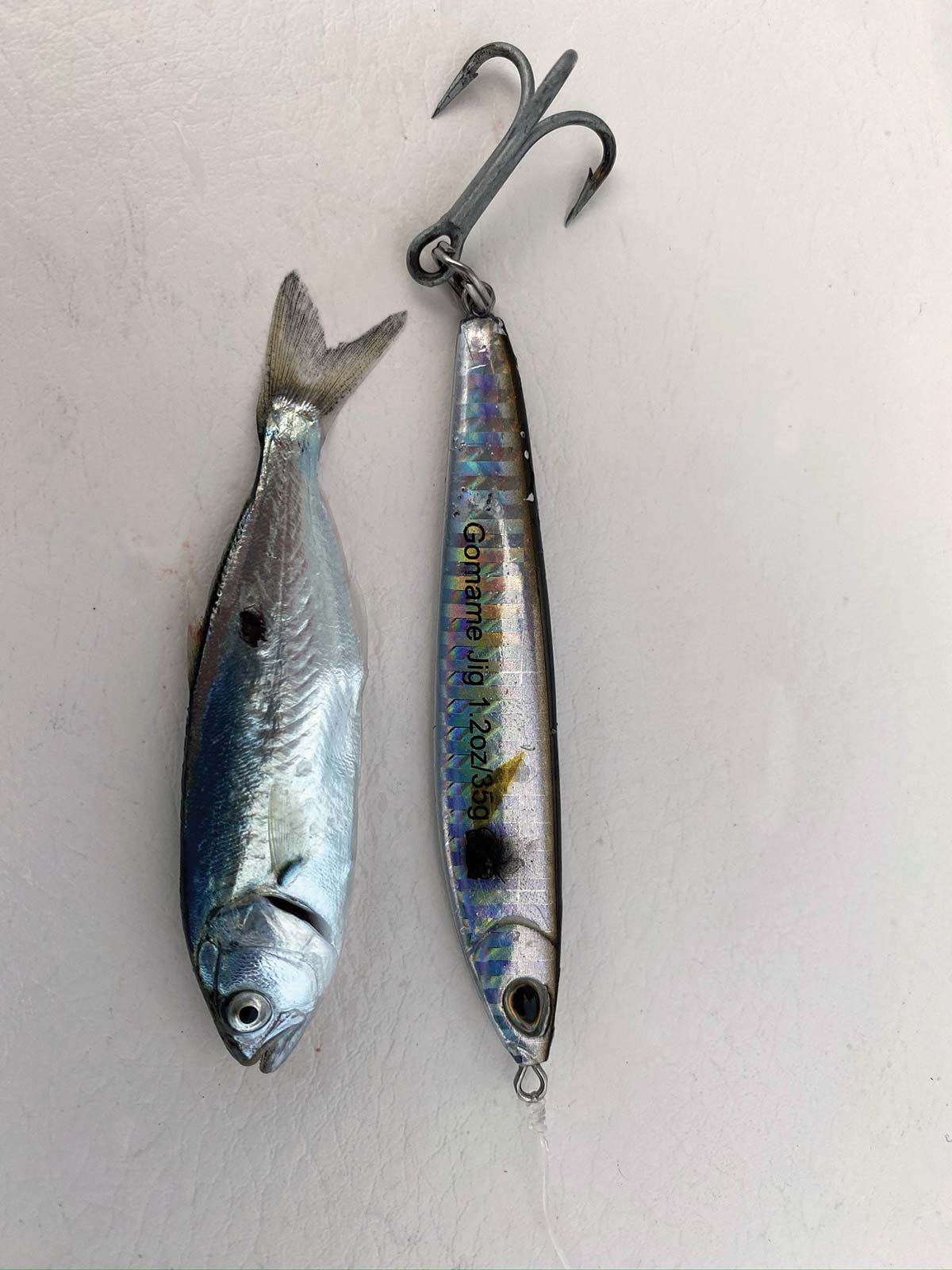
Behavior Of Other Fish
This observation has single-handedly saved trips for us. A major pattern I’ve noticed is that the feeding frenzy created by albies can cause a drastic behavioral shift in other fish in the area. This is particularly true for bottom fish. All fish species are opportunistic feeders and when a large feed has erupted, other bottom fish will abandon their typical haunts and follow the ravaged school of baitfish, devouring scraps and swallowing wounded bait.
Many times, I will blind cast within 10 feet of the surface, at a fast retrieve, and catch sea bass. Under normal circumstances, this would be very rare. I’ve caught fluke and tautog using this unintentional method as well. This is peculiar behavior from these fish, since they rarely leave structure. Catching fish like bluefish, stripers or mackerel is much more common, and a great sign since they are often mixed in with albies. If I start catching fish in a way that I normally wouldn’t, I pay very close attention. Often, another feed isn’t far away.
| MATCH THE HATCH |
| Try to “match the hatch” and successfully replicate the bait the fish are after. The author typically starts small, with silver or blue epoxy and metal jigs. The Daiwa Zakana casting jig has been his go-to in recent years. Small, soft plastics Like Ron-Zs and Albie Snax can also be productive. He always has a variety of colors on hand and will adjust until he finds what the fish want. |
False albacore can be some of the most rewarding, yet frustrating species one can target. They have aptly earned their nickname, ‘funny fish’ for obvious reasons. One minute they’re up, the next, they’re down. They can move left then immediately move right. You can be fishing an all-out mega frenzy then suddenly, nothing. Luckily for us enthusiastic hardtail hunters, these funny fish leave us clues everywhere they go.
Take your time on your next run-and-gun albie outing. Don’t just hammer down the throttle everywhere you go, ignoring important signs. Observe what’s happening around you and take specific notes. With some practice and patience, you can drastically increase your odds of finding these fish when it may seem hopeless.



